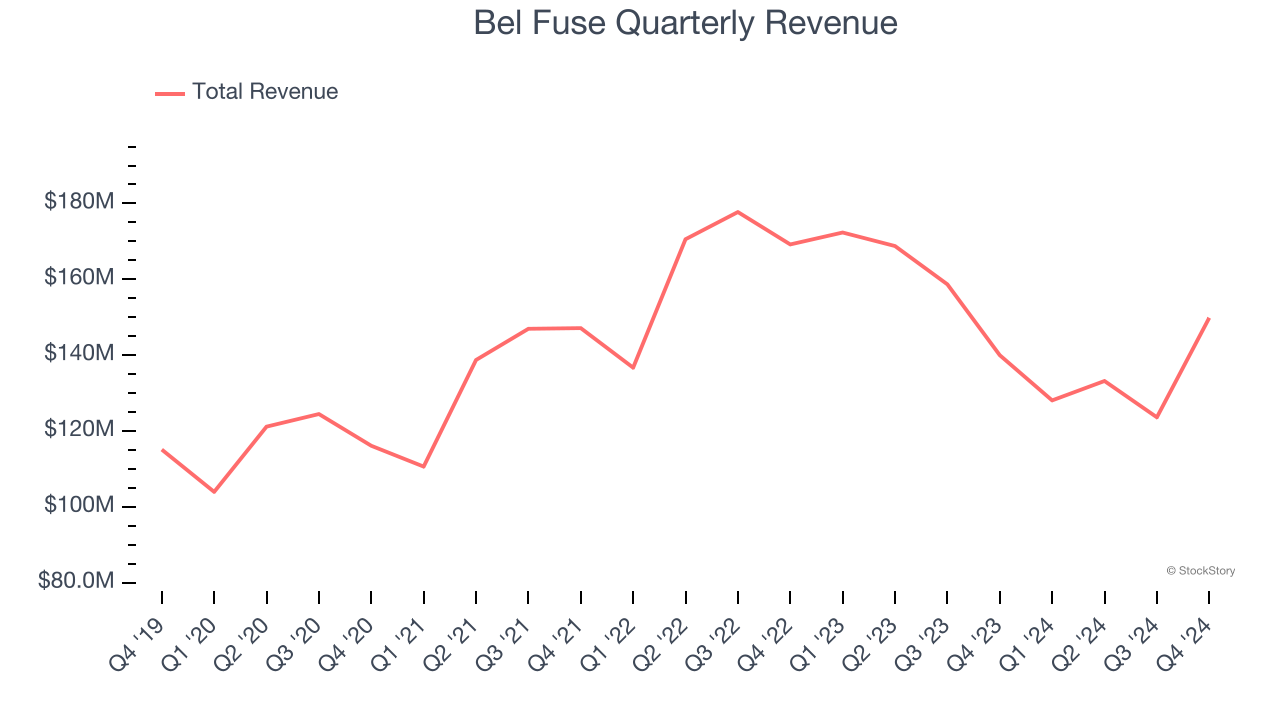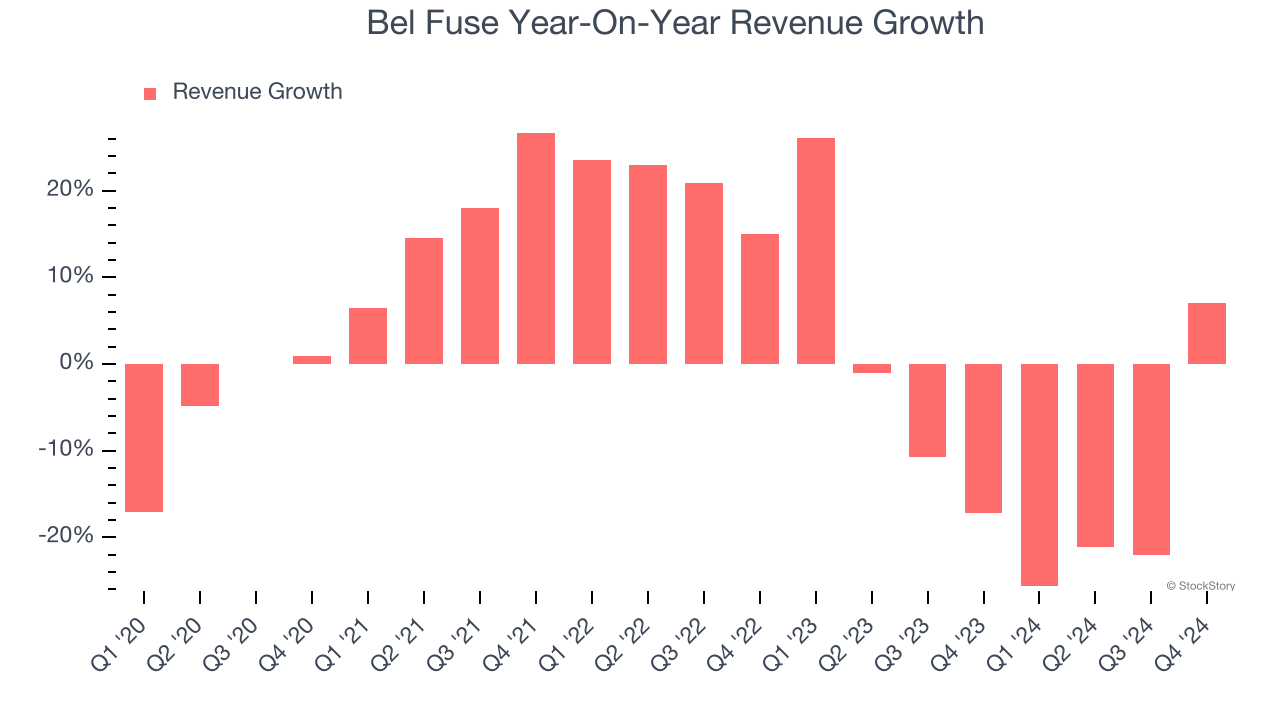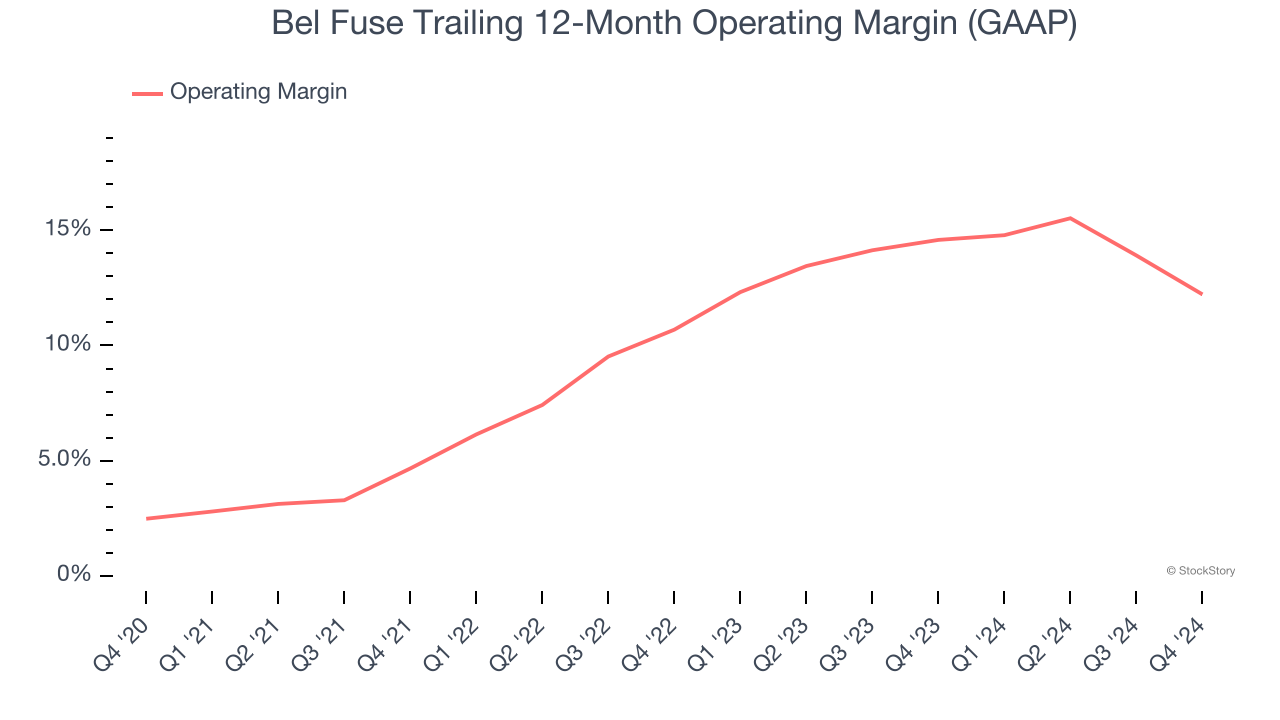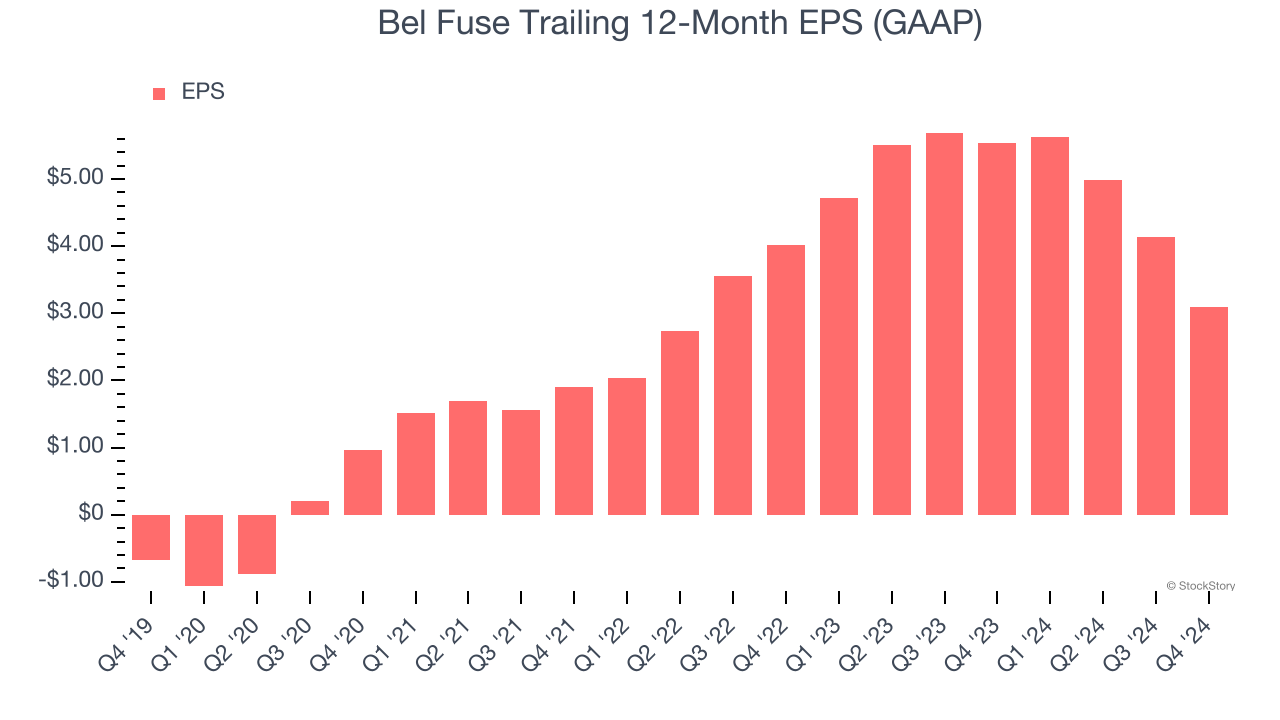
Electronic system and device provider Bel Fuse (NASDAQ: BELFA) reported Q4 CY2024 results exceeding the market’s revenue expectations, with sales up 7% year on year to $149.9 million. On top of that, next quarter’s revenue guidance ($149 million at the midpoint) was surprisingly good and 14.4% above what analysts were expecting. Its GAAP loss of $0.14 per share was significantly below analysts’ consensus estimates.
Is now the time to buy Bel Fuse? Find out by accessing our full research report, it’s free.
Bel Fuse (BELFA) Q4 CY2024 Highlights:
- Revenue: $149.9 million vs analyst estimates of $126.4 million (7% year-on-year growth, 18.6% beat)
- EPS (GAAP): -$0.14 vs analyst estimates of $0.73 (significant miss)
- Adjusted EBITDA: $30.33 million vs analyst estimates of $16.77 million (20.2% margin, 80.8% beat)
- Revenue Guidance for Q1 CY2025 is $149 million at the midpoint, above analyst estimates of $130.2 million
- Operating Margin: 8.3%, down from 14.3% in the same quarter last year
- Free Cash Flow Margin: 3.8%, down from 17.5% in the same quarter last year
- Market Capitalization: $1.02 billion
"Bel's profitability levels remained strong throughout 2024 despite a challenging top line environment," said Daniel Bernstein, President and CEO.
Company Overview
Founded by 26-year-old Elliot Bernstein during the electronics boom after WW2, Bel Fuse (NASDAQ: BELF.A) provides electronic systems and devices to the telecommunications, networking, transportation, and industrial sectors.
Electronic Components
Like many equipment and component manufacturers, electronic components companies are buoyed by secular trends such as connectivity and industrial automation. More specific pockets of strong demand include data centers and telecommunications, which can benefit companies whose optical and transceiver offerings fit those markets. But like the broader industrials sector, these companies are also at the whim of economic cycles. Consumer spending, for example, can greatly impact these companies’ volumes.
Sales Growth
A company’s long-term performance is an indicator of its overall quality. While any business can experience short-term success, top-performing ones enjoy sustained growth for years. Regrettably, Bel Fuse’s sales grew at a sluggish 1.7% compounded annual growth rate over the last five years. This fell short of our benchmarks and is a poor baseline for our analysis.

Long-term growth is the most important, but within industrials, a half-decade historical view may miss new industry trends or demand cycles. Bel Fuse’s history shows it grew in the past but relinquished its gains over the last two years, as its revenue fell by 9.6% annually. 
This quarter, Bel Fuse reported year-on-year revenue growth of 7%, and its $149.9 million of revenue exceeded Wall Street’s estimates by 18.6%. Company management is currently guiding for a 16.3% year-on-year increase in sales next quarter.
Looking further ahead, sell-side analysts expect revenue to grow 3.1% over the next 12 months. While this projection suggests its newer products and services will spur better top-line performance, it is still below average for the sector.
Here at StockStory, we certainly understand the potential of thematic investing. Diverse winners from Microsoft (MSFT) to Alphabet (GOOG), Coca-Cola (KO) to Monster Beverage (MNST) could all have been identified as promising growth stories with a megatrend driving the growth. So, in that spirit, we’ve identified a relatively under-the-radar profitable growth stock benefiting from the rise of AI, available to you FREE via this link.
Operating Margin
Bel Fuse has done a decent job managing its cost base over the last five years. The company has produced an average operating margin of 9.4%, higher than the broader industrials sector.
Looking at the trend in its profitability, Bel Fuse’s operating margin rose by 9.7 percentage points over the last five years, showing its efficiency has meaningfully improved.

This quarter, Bel Fuse generated an operating profit margin of 8.3%, down 6.1 percentage points year on year. Since Bel Fuse’s operating margin decreased more than its gross margin, we can assume it was recently less efficient because expenses such as marketing, R&D, and administrative overhead increased.
Earnings Per Share
Revenue trends explain a company’s historical growth, but the long-term change in earnings per share (EPS) points to the profitability of that growth – for example, a company could inflate its sales through excessive spending on advertising and promotions.
Bel Fuse’s full-year EPS flipped from negative to positive over the last five years. This is encouraging and shows it’s at a critical moment in its life.

Like with revenue, we analyze EPS over a shorter period to see if we are missing a change in the business.
Sadly for Bel Fuse, its EPS declined by more than its revenue over the last two years, dropping 12.2%. This tells us the company struggled to adjust to shrinking demand.
We can take a deeper look into Bel Fuse’s earnings to better understand the drivers of its performance. Bel Fuse’s operating margin has declined by 4.3 percentage points over the last two years. This was the most relevant factor (aside from the revenue impact) behind its lower earnings; taxes and interest expenses can also affect EPS but don’t tell us as much about a company’s fundamentals.
In Q4, Bel Fuse reported EPS at negative $0.14, down from $0.90 in the same quarter last year. This print missed analysts’ estimates, but we care more about long-term EPS growth than short-term movements. Over the next 12 months, Wall Street expects Bel Fuse’s full-year EPS of $3.09 to grow 49.8%.
Key Takeaways from Bel Fuse’s Q4 Results
We were impressed by how significantly Bel Fuse blew past analysts’ EBITDA expectations this quarter. We were also excited its revenue outperformed Wall Street’s estimates by a wide margin. On the other hand, its EPS missed significantly due to $8.6 million of non-recurring acquisition-related costs. Overall, we think this was a solid quarter with some key areas of upside. The stock traded up 5.9% to $88.08 immediately following the results.
Bel Fuse may have had a good quarter, but does that mean you should invest right now? The latest quarter does matter, but not nearly as much as longer-term fundamentals and valuation, when deciding if the stock is a buy. We cover that in our actionable full research report which you can read here, it’s free.

